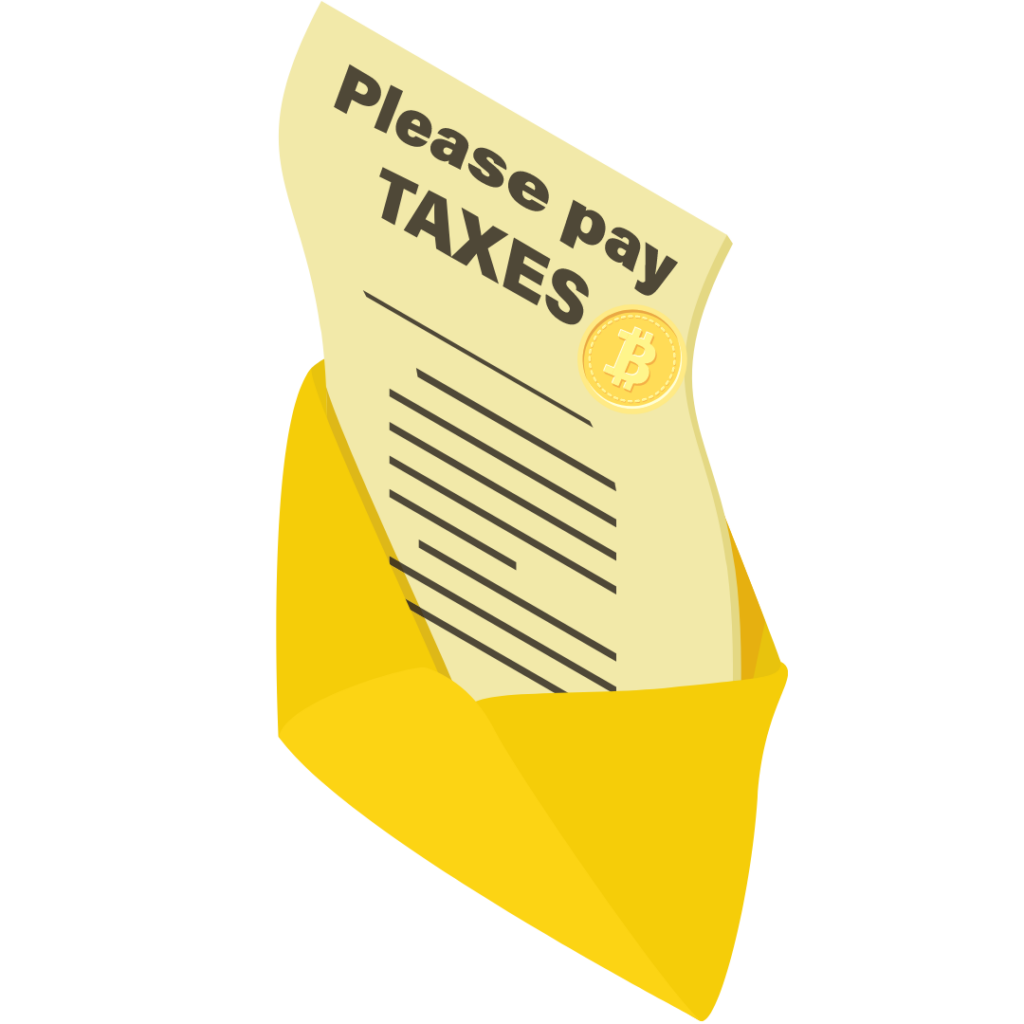IRS Crypto Tax Notices: How to Respond?
The following are the most common IRS crypto tax notices and what they mean:
IRS Notice CP2000 alerts you about mismatches in your reported crypto transactions, requiring your review and response. Letter 6173 indicates the potential underreporting of crypto activities, needing a mandatory response. Letter 6174 serves as an advisory, and 6174-A suggests possible unreported transactions, urging you to recheck your filings.
In 2020, the IRS sent a wave of letters to thousands of crypto holders, signaling their bullish initiative to crack down on unreported crypto income ever since. While it’s not 2020, you might still receive one of these three letters.
But what do you do when you receive one? What does it mean? Do you need to respond? If yes, how? These are all questions we’ll answer in this guide, giving you a step-by-step guide on how to respond to these IRS crypto tax notices and how to avoid them in the first place.
How is Crypto Taxed in the US?

In the US, taxes on cryptocurrency are mainly divided into two types: capital gains taxes and income taxes.
Capital Gains Taxes: This applies when you buy, sell, or trade cryptocurrencies. The tax rates for short-term capital gains (for assets held less than a year) range from 10% to 37%. However, the tax rate for long-term capital gains (on assets held for more than a year) is lower, ranging from 0% to 20%. The good news is if you’ve made a loss on some of your cryptocurrency investments, you can use these losses to reduce the taxes on your gains.
Income Taxes: Now, if you get crypto as payment for a job, a service, or through activities like mining or staking, it’s treated as income. Just like your regular income, it’s subject to the ordinary income tax rates.
Read our guide on US crypto tax laws for more comprehensive and nuanced information.
Understanding IRS Crypto Tax Notices

The following are some of the most common crypto tax notices you might receive or have received in the past. Let’s find out what they mean and their implications for you.
How to Respond to IRS Notice CP2000?
Receiving a CP2000 notice from the IRS can be a bit worrying, but it’s important to understand what it means and how to deal with it.
This notice usually means there’s a mismatch between the income or payment data the IRS got from sources like crypto exchanges and wallets (reported through forms like 1099-B, 1099-K, or 1099-MISC) and what you put on your tax return. It’s not an audit but more of a heads-up to check if everything on your tax return is correct.
Sometimes, these notices are inaccurate, especially with complex crypto transactions involving different exchanges and wallets. For instance, if you transferred crypto between your own wallets, but the wallets reported them as a disposal, the IRS might see these as taxable events even though they’re not. The IRS might not see the whole picture or misunderstand how these transactions work.
Using a crypto tax software like Bitcoin.Tax can really help in these situations. These tools keep your transaction history well-organized and clear, which helps prevent any misunderstandings.
That being said, you must respond to a CP2000. Ignoring it can result in the IRS charging you extra taxes, penalties, and interest. They might even send a Notice of Deficiency, which can lead to more serious legal and financial issues.
How to Respond to the Notice?
If you don’t agree with the notice, make sure to explain why and include any necessary documents. And if you agree, you must sign the response form and might have to pay more taxes. If you’re unsure, it’s better to consult a crypto tax professional and let the experts handle it.
What is the Difference Between IRS Notice CP2000 and CP2501?
The CP2000 is an automatic notice sent when the data the IRS has doesn’t line up with your tax return. In contrast, a CP2501 is a preliminary letter sent out before the CP2000, asking you to double-check the information the IRS has received.
How to Respond to IRS Letter 6173?
If you receive an IRS Letter 6173 in your hands, it means the IRS thinks you might have missed reporting some of your crypto transactions. It shows that the IRS has details about your crypto activities and suspects you haven’t fully reported your crypto earnings or transactions.
This letter is not just a nudge to remind you. You’ve got to respond to Letter 6173 – it’s not optional. And make sure you meet the deadline mentioned in the letter. Not responding could open the door to an audit or more intense IRS actions.
Letter 6173 is one of those IRS crypto tax notices that the authorities continue to send as a part of their ongoing push to keep everyone in line with crypto tax rules.
How to Respond to IRS Letter 6173?
Check Your Tax Returns: Go back and carefully examine your tax returns for the years mentioned in the letter.
Fix Errors with Amended Returns: If you spot some transactions you missed or reported wrong, you must set things straight. Do this by filing amended returns using Form 1040-X and other forms.
Explain Your Side: If you believe you’ve reported all your crypto transactions correctly, write a clear explanation for the IRS and send it. Include proof of your crypto transactions and how you reported them.
Get Professional Help: If all this seems overwhelming, or if it’s just pretty complicated, talk to a tax professional. Ideally, find someone with expertise in crypto taxes.
Remember, dealing with IRS Letter 6173 properly and on time is super important to avoid any further trouble with the IRS.
How to Respond to IRS Letter 6174 and 6174-A?
These IRS crypto tax notices are specifically targeted at crypto users. The key difference between them is their tone and intent. IRS Letter 6174 is more of a friendly heads-up, reminding you of your crypto tax reporting obligations. On the other hand, IRS Letter 6174-A is a bit more serious. It suggests that the IRS might have some information that you haven’t fully reported your crypto transactions.
Do You Need to Respond?
Technically, you don’t need to respond to Letter 6174, as it’s more informative. For Letter 6174-A, while not explicitly demanding a response, it’s a strong hint for you to recheck and amend your filings if you find any errors.
Common Mistakes to Avoid When Responding to IRS Crypto Tax Notices
Dealing with the complexities of IRS crypto tax notices can be challenging. To make sure you’re on track, here are some common mistakes to avoid –
Misunderstanding the Notices: Each IRS notice, be it CP2000, Letter 6173, 6174, or 6174-A, has its own specific meaning and purpose. It’s crucial to understand exactly what each notice is asking for. Misreading them can lead to wrong responses. But now that you have read this guide, you should be good. Feel free to come back to this guide if you’re ever confused in the future.
Overlooking Important Details: Pay careful attention to your crypto transactions and the IRS tax notices. This includes checking the dates, amounts, and types of all transactions the IRS is pointing out in their letters. Small mistakes can lead to big problems later on.
Missing Deadlines: IRS notices come with strict deadlines. Missing these can result in penalties, additional interest, and more attention from the IRS. To avoid this, keep track of these deadlines and respond as soon as possible. If you need more time, contact the IRS to see if you can get an extension.
How to Accurately Report Crypto Income and Transactions to the IRS?
Accurate reporting of crypto income and transactions to the IRS is crucial, not only for compliance but also to avoid hefty penalties. If you miss the tax filing deadline, the IRS can impose a 5% penalty on unpaid taxes for each month your return is late, up to a maximum of 25%. If your return is over 60 days late, the minimum penalty is either $435 or 100% of the unpaid tax, whichever is smaller.
Another penalty, the Failure to Pay, applies if you don’t pay your crypto taxes on time. This is set at 0.5% of the unpaid tax for every month and can add up to 25%. This means even a small tax debt can become a significant burden if ignored for too long.
Here’s how to accurately file your tax return to avoid receiving IRS crypto tax notices:
For Disposals (Gains and Losses): Report these on Schedule D (Form 1040) and Form 8949. This includes selling crypto for cash, using crypto to buy goods or services, and exchanging one crypto for another.
For Crypto Income: This involves earnings from mining, staking, airdrops, or receiving crypto as payment. Report these on Schedule 1 (Form 1040) for miscellaneous income or Schedule C (Form 1040) if you’re operating as a crypto business.
If you’re pressed for time or face emergencies preventing you from filing on time, the IRS allows for a deadline extension. This can give you the extra time to compile your documents and report accurately. Moreover, if you realize you’ve made a mistake on a previously filed return, amend it using Form 1040X.
You can file your taxes through traditional mail or online using platforms like TurboTax and TaxAct. Consider using a crypto tax software, like Bitcoin.Tax for a more streamlined process, especially if you have hundreds and thousands of transactions. Bitcoin.Tax can track your transactions, calculate your taxes, and even create a tax report, simplifying the entire process.